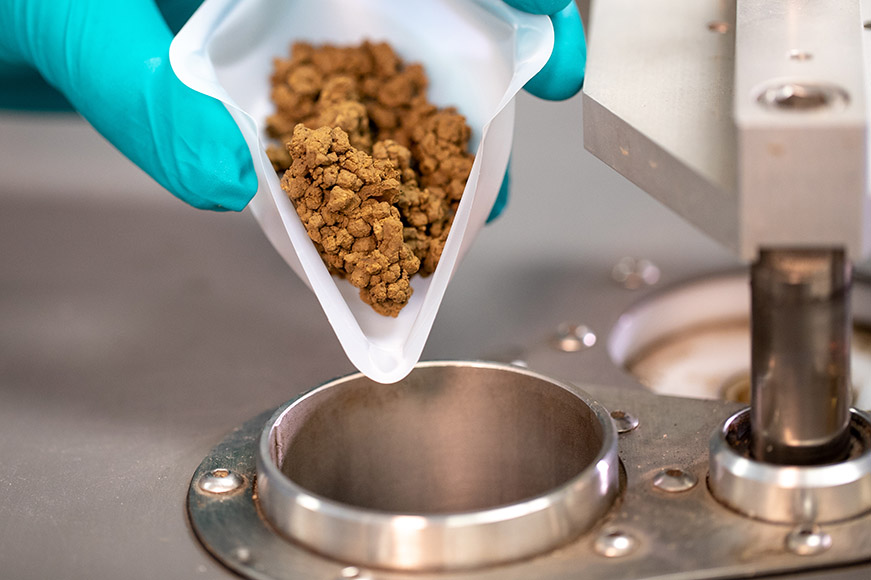High-Productivity Acres Benefit From Micronutrient Applications

We get that extra inputs are costly, that budgets are tight and that every investment needs to pay off. But you may be missing an opportunity to maximize yield potential if you haven’t considered adding micronutrients to your fertilization program, especially on high-productivity acres. That’s because many micronutrients act as enzyme activators to regulate physiological processes within a plant that may ultimately impact yield potential.
Zinc and boron critical for corn
For corn production, the two micronutrients we talk about frequently are zinc and boron. Zinc deficiencies can occur early in the growing season and typically are more common in cool, wet conditions. For this reason, I often recommend including a chelated zinc with in-furrow applications. Chelation helps keep the nutrient available in the soil so it is easily accessible by the growing seedling. If an in-furrow application isn’t an option, you might also consider a granular or a foliar zinc application in-season.
Boron helps with the transport of sugars across cell membranes and plays a critical role for successful corn pollination. Boron isn’t applied in-furrow because it is toxic to the seed. If a boron deficiency is identified, an application of a foliar product such as MAX-IN® Ultra ZMB® or MAX-IN® Boron could be an effective option to help correct the deficiency in-season. MAX-IN products contain CornSorb® technology, which helps droplets stay moist for a longer period of time for increased availability and movement of the nutrient into the leaf.
Strive for more efficient nutrient uptake
To help ensure maximum plant uptake of micronutrients, start by examining your soil pH. In general, micronutrients become more available as the soil pH decreases and less available as the pH rises above 7. To get the most from those high-yield potential acres, it’s essential that nutrients are available in a form that is efficient for plant uptake.
Another thing to keep in mind is that different nutrients are taken up by different mechanisms in the soil. Plants can access nutrients through root interception, where the root grows into where the nutrient is in the soil; through mass flow, where the nutrient moves with soil water to the roots; or through diffusion, where the nutrient moves in a concentration gradient in the soil solution to the roots. Knowing which nutrient is deficient and how it’s likely to be taken up by the plant will help you identify if the nutrient should be applied in a broadcast, band or foliar application.
Choose the right products
There are many micronutrient products on the market, so it’s important to know how or if the product is chelated in order to make an apples-to-apples comparison of different options. For more information on evaluating different micronutrient solutions to assess whether you’re getting the most from your high-productivity acres, ask your retailer or WinField United representative about attending a clinic.
© 2019 WinField United. CornSorb, MAX-IN, WinField and ZMB are trademarks of WinField United.
Zinc and boron critical for corn
For corn production, the two micronutrients we talk about frequently are zinc and boron. Zinc deficiencies can occur early in the growing season and typically are more common in cool, wet conditions. For this reason, I often recommend including a chelated zinc with in-furrow applications. Chelation helps keep the nutrient available in the soil so it is easily accessible by the growing seedling. If an in-furrow application isn’t an option, you might also consider a granular or a foliar zinc application in-season.
Boron helps with the transport of sugars across cell membranes and plays a critical role for successful corn pollination. Boron isn’t applied in-furrow because it is toxic to the seed. If a boron deficiency is identified, an application of a foliar product such as MAX-IN® Ultra ZMB® or MAX-IN® Boron could be an effective option to help correct the deficiency in-season. MAX-IN products contain CornSorb® technology, which helps droplets stay moist for a longer period of time for increased availability and movement of the nutrient into the leaf.
Strive for more efficient nutrient uptake
To help ensure maximum plant uptake of micronutrients, start by examining your soil pH. In general, micronutrients become more available as the soil pH decreases and less available as the pH rises above 7. To get the most from those high-yield potential acres, it’s essential that nutrients are available in a form that is efficient for plant uptake.
Another thing to keep in mind is that different nutrients are taken up by different mechanisms in the soil. Plants can access nutrients through root interception, where the root grows into where the nutrient is in the soil; through mass flow, where the nutrient moves with soil water to the roots; or through diffusion, where the nutrient moves in a concentration gradient in the soil solution to the roots. Knowing which nutrient is deficient and how it’s likely to be taken up by the plant will help you identify if the nutrient should be applied in a broadcast, band or foliar application.
Choose the right products
There are many micronutrient products on the market, so it’s important to know how or if the product is chelated in order to make an apples-to-apples comparison of different options. For more information on evaluating different micronutrient solutions to assess whether you’re getting the most from your high-productivity acres, ask your retailer or WinField United representative about attending a clinic.
© 2019 WinField United. CornSorb, MAX-IN, WinField and ZMB are trademarks of WinField United.





